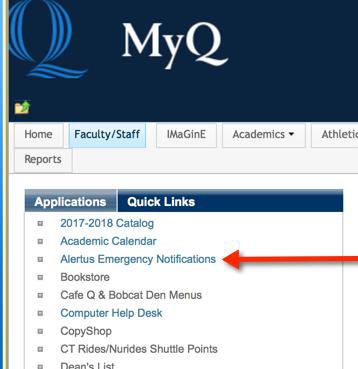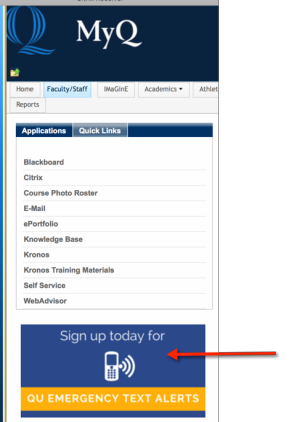By Nick Williams
As shootings have become more common in American schools, the importance of active shooter protocol is exaggerated.
Connecticut has a history of violence on school campuses. Sandy Hook Elementary School in Newtown was attacked by an active shooter in 2012. The gunman killed 27 staff members and students during the tragedy.
Despite its impressive safety record, Quinnipiac University hasn’t escaped the need to prepare its campus for the worst.
Quinnipiac was named 2014’s safest college in America by University Primetime according to the Quinnipiac Chronicle. The number of criminal offenses have decreased by nearly 45 percent from 2014 to 2016 on campus according to Quinnipiac’s 2017 Annual Security and Fire Safety Report.

Criminal offenses may be down but co-chair of the emergency management team at Quinnipiac, Keith Woodward, believes that is no reason to forget emergency protocol. “Keeping safety in the forefront of our community is something we do, and we don’t take it for granted,” Woodward said.
The Quinnipiac University emergency management team sent an email to all faculty and staff at the end of January. The email was regarding important safety information and outlined the emergency alert systems used by Quinnipiac. It also supplied faculty procedure in specific emergency situations.
Included in the email was information for Quinnipiac’s emergency text and Alertus computer alert systems. It also gave instructions for the Rave Guardian App, a free app that provides “rapid and proactive” communication to emergency services and contacts.
Woodward also said that the information in the email was not new. Faculty procedure for the scenarios of an active shooter, lockdown, evacuation and shelter in place are all described in the email. They are advised to know two exits from the classroom outside as well as a hiding spot in the classroom. They should also be familiar with the types of emergency messages. Similar protocol for students can be found on Quinnipiac’s MyQ student portal.
Assistant Professor of Journalism, Ben Bogardus, feels that most emergencies are common sense. “Things like, ‘if the fire alarm goes off, leave the building’ and ‘if a student collapses, call 911,” Bogardus said. When asked about preparedness for emergencies in the classroom however, he says, “there needs to be more information on what to do in situations where we [the class] need to stay in the room.”

Compared to the Hamden public school system, Quinnipiac is more prepared for emergency situations. Listed under the district policies of Hamden Public School’s website is their “Emergencies and Disaster Preparedness.” The website only has procedure for fires, bomb threats and emergency closings under said category.
Another clear difference between Quinnipiac and Hamden public schools is the distribution and depth of information. The Hamden public school’s safety information was difficult to find, but Quinnipiac’s information is promoted through alert systems, emails and student portals.
Quinnipiac may have safety information readily available, but it is not necessarily well received. Many students admit that they are not signed up for or even aware of Quinnipiac’s several alert systems. Christian Quigley, a sophomore biomedical marketing major, said he receives email alerts from the school during power outages, parking closures and local emergencies. However, he said has no additional alert app or service from Quinnipiac.
Similarly to professor Bogardus, Quigley had no prior knowledge that the safety information for events such as active shooters and lockdowns was readily available.
“Training to every scenario is not a goal we chase,” Woodward explains. However he hopes the information helps by educating the community on how to react to situations.
Senior Angela Varney felt early application was the best option for Quinnipiac to improve their safety information distribution. “The best way to inform students of their service would be to introduce alert systems in Freshman seminar classes,” Varney said.
For more specific emergency situations and procedure go to ‘Health and Campus Safety’ on Quinnipiac’s website.